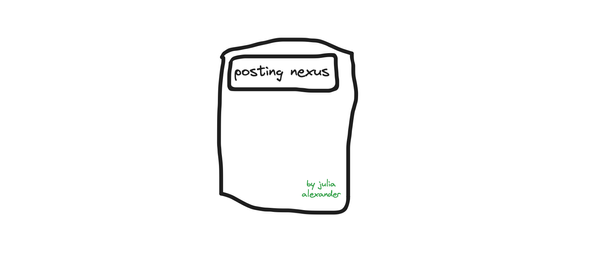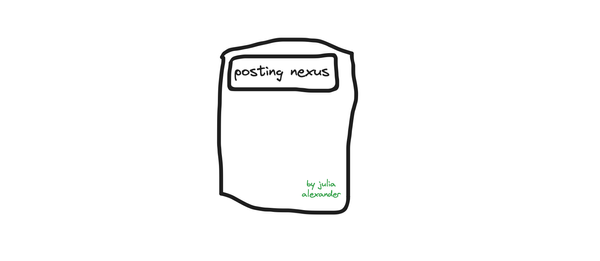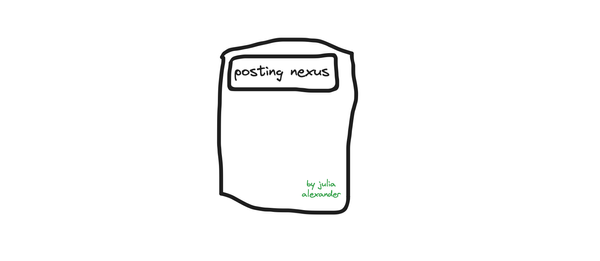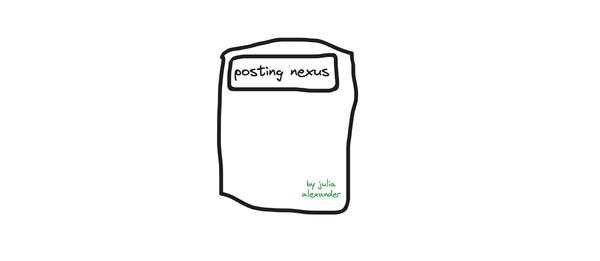Introducing "Posting Nexus" a not-quite newsletter
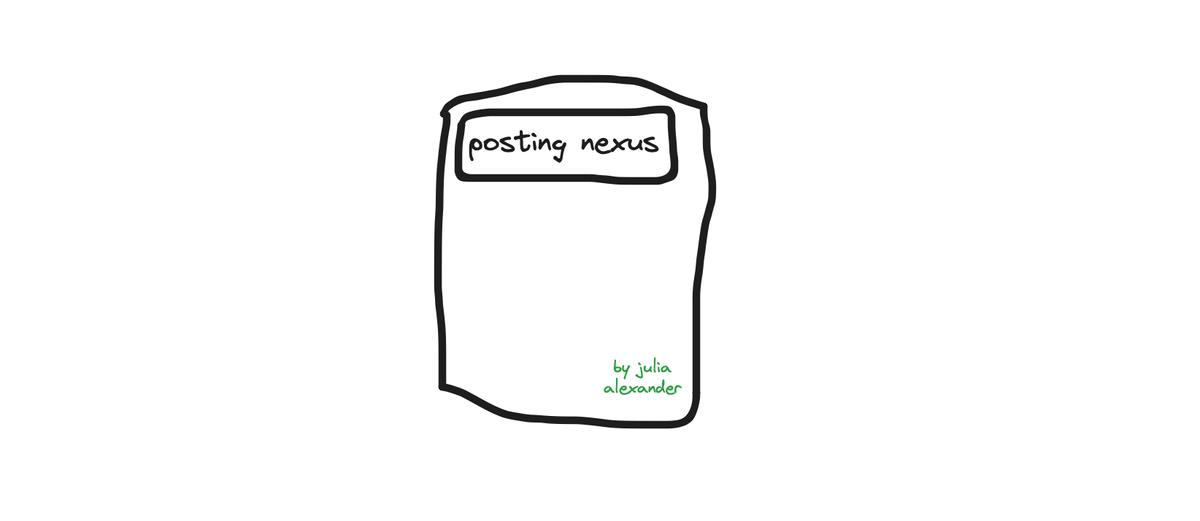
I never know how to start one of these “hi!” posts, despite years of writing a newsletter. There’s a good chance that if you’re reading this, you’ve come across my work in Puck, my time spent co-hosting Downstream, or maybe you stumbled upon Musings on Mouse at some point. I want to make clear right from the get-go that this blog (it really isn’t a newsletter) isn’t about streaming. I am still thinking about streaming every single day, but working at Disney means that any thoughts I may have about all of that goes into a memo instead of into a CMS. Streaming, however, is only one tendril of my larger obsession: attention.
This blog — and it really isn’t a newsletter as you can expect a few posts throughout the week, varying in length and style, based on whatever spurred a longer-than-a-tweet thought — is about what the concept of attention really means in a maturing “attention economy.” How far are large conglomerates and new technologists willing to push people in order to maintain that attention flow? How does our underlying psyche, when guided by these two forces, change our most primal functions and needs? And how, when this is happening at unprecedented scales at unprecedented speeds, do we better educate ourselves about all of the hidden incentives we interact with every single day?
If I was going to dissect that a little further and really dive into my two biggest obsessions (of which streaming belongs to), it boils down to these two questions: why do we do anything on the internet, and how does that impact why we do anything away from the internet?
I’ve spent some time trying to come up with a working model to answer the question and, while I’m nowhere close to any real answer, I have devised a system to better guide my approach. I call it the IPA Matrix. Think of it as a triple Venn Diagram with the bubbles representing Identity, Platforms, and Attention.
Identity = values and interests
Platforms = connection and opportunity
Attention = validation and acceptance
At the center of the IPA Matrix is one word: incentive. If incentive is the emotional prerequisite for action, then action in our digital lives is content. We are presented with incentives every single day. Little signals sending synapses to our brains all in an effort to get us to do something. On the internet, everything comes back to hitting send. I post, therefore I am. And every post has the same underlying incentive. My identity is visible to people on platforms that I use for connection, and those people reward me with the attention I seek to feel acceptance. This isn’t a new structure. The same philosophies and formulas existed well before the internet. Magazine (platform) editors picked the most attractive people to help sell magazines to teenagers around the world, encouraging the shaping of their identities that guaranteed acceptance and attention for the person this whole strategy is designed around — you. Here’s a visual representation to help.
What is wholly unparalleled and unprecedented is the scale and speed at which it now happens. Some of this is undeniably positive; protests are organized faster, news reaches more people, and true connection isn’t hindered by geography. But as our current digital reality has proven again and again, there is an alarming amount of harm that destabilizes the good. Posting is designed to receive engagement. Whether that’s within a group chat (I send a meme, you send back an “lol” and voila, friendship) or to the vast global world (I upload a TikTok video in the hopes of getting one million views), putting time and effort into any action is done so with the hopes of an opposite and equal reaction. Follow for follow. Attention for attention.
We also know that platforms reward engagement, and engagement is more catching if it skews negative. Negativity is many things but it is largely defined by fear, anger, and ignorance. When those three things challenge people’s core identities on platforms where nothing feels real even though everything is real, it creates a wildfire that is impossible to tame let alone extinguish.
But this isn’t a blog dedicated to the internet being bad. I don’t believe the internet is a doomsday scenario. I believe more good happens than bad. The research suggests so, too. In a study published this year called Technology, Mind, and Behavior, the authors discovered that people with internet access found stronger positive effects in their real lives. There was an eight percent increase (on average) in areas like life satisfaction and social activity versus those without internet access. And while different groups experience the internet in different ways — the study found that, unsurprisingly, women between 15 and 24 skewed toward the internet having a more negative effect on their welfare — the average suggests that the internet is still more beneficial than consequential.
No, this experiment is an exploration of two worlds that exist in perpetuity with each other but that we don’t often talk about outside of academic journals — psychology and strategy. We design with people’s motives in mind, exploiting them for pure growth. We’ve only just started to openly discuss the long term effects of behavior changing incentive structures that we create and implement at scale. We’re also starting to see the negative ripple effects of those growth-minded moves. Call it whatever you want, like the “enshittification” of the internet as Cory Doctorow labeled it, but each year the internet seems to get a little worse when built with this framework top of mind. Strategy drives every decision made; psychology drives every following action. When we pair these two fields together to study identity, platforms, and attention to better understand the underlying incentives across everyone involved in the cycle of constructing our shared online world, the closer we get to building a healthier digital future.
Maybe that seems naive. It is naive, but it’s also something that I firmly believe. Most people don’t set out to build something harmful. Harm comes from two facets of decision making: not investigating early signs of how invisible encouragements affect dialog at a global scale, and choosing to ignore any negative results for financial reasons.
The nexus of posting is easy to understand. We post so we’re seen. We post so we’re accepted. We post so we connect. And, ultimately, we post because if we don’t then who are we to a world that radically rewards the posters? Dating apps, LinkedIn job posts, funny tweets, baby photos on Instagram, or recipes on a cuisine subreddit. Interaction is breathing. Every action we take online exists at the nexus of several layers of psychological and strategic forethought centered on your needs (identity), how you achieve those needs (platforms), and how those needs are met (attention).
It’s a humongous topic but there are a million tendrils to pull on. So who is this blog for? It’s for anyone who wants to spend more time thinking about why we do any of what we do. Why did you click on this post? Why did you share it? Why did you do something other than read this post? Why did you pick that movie? Why did you join that app? Why did you like that meme?
Lastly, but importantly, how do all of these thoughts play out at scale, and what does that mean for thinking about how we build the shared world we want to exist in together? I truly believe the internet can be a better place, but first we have to acknowledge that it starts with us and how we are designed to act on platforms we know very little about. I’m excited to dig into that a little more together.

